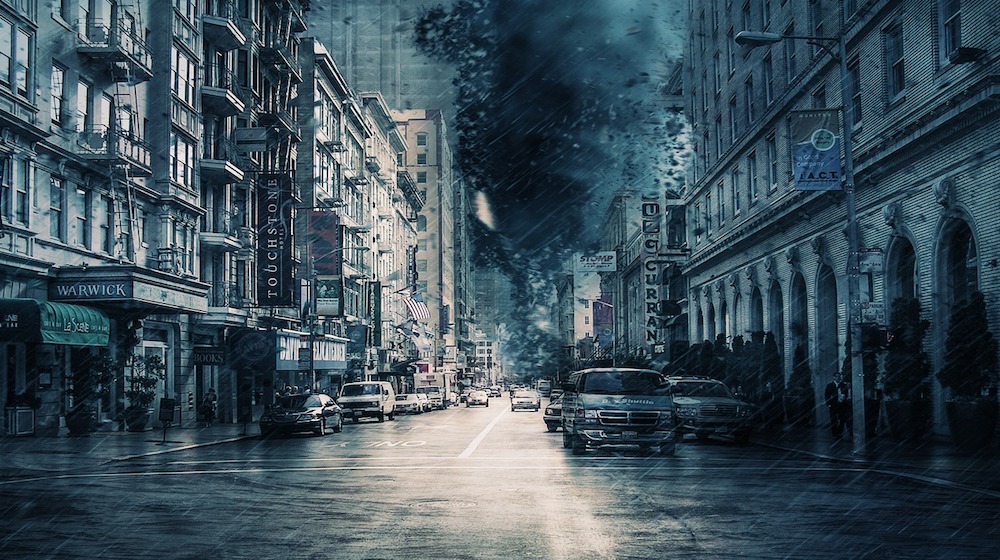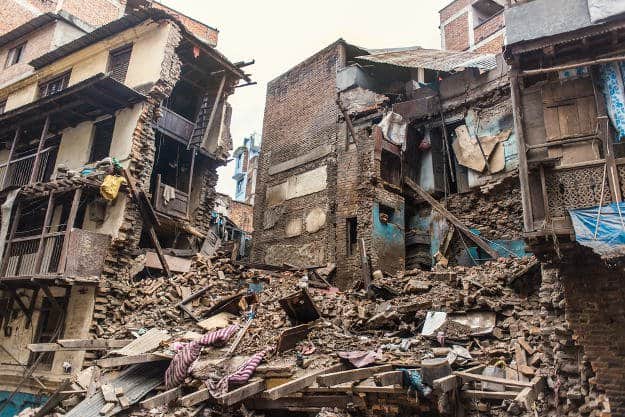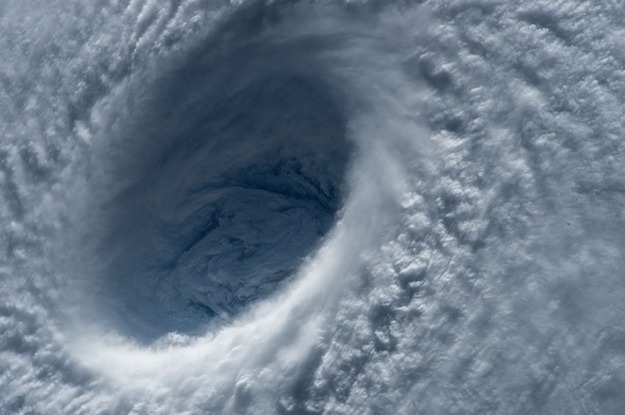Featured Articles
7 Deadliest Disasters in American History

The deadliest disasters to devastate American history have accounted for tens of thousands of deaths. Here is a look at the top seven deadliest disasters in U.S. history based on total fatalities.
7 Deadliest Disasters in American History
As American history shows, disaster can strike at any time. Whether these were man-made or natural disasters, their effects were absolutely devastating. We've compiled a list of the top seven deadliest disasters in U.S. history – a death toll which totals more than 18,000 people.
Here are some of the deadliest disasters that have ever taken place on American soil.
7. Oklahoma City Bombing

Location: Oklahoma City, OK
Date: April 19, 1995
Disaster type: Terrorism
Death toll: 168 people
Damage cost: $681 million
In April 1995, anti-government militant Timothy McVeigh, with the help of co-conspirator Terry Nichols, detonated a truck bomb outside the Alfred P. Murrah Federal Building in Oklahoma City. The building housed regional offices for the Social Security Administration, Secret Service, Drug Enforcement Administration, Bureau of Alcohol, Tobacco and Firearms, and other federal agencies. 168 people were killed in the attack — including 19 children under the age of 6 — and over 800 others were injured.
Both McVeigh and Nichols were tried and found guilty of implementing the terrorist plot. Nichols is serving life in prison, while McVeigh was executed for his crimes in 2001.
6. Tri-State Tornado
Location: Missouri, Illinois and Indiana
Date: March 18, 1925
Disaster type: Tornado
Death toll: 695 people
Damage cost: $1,650,000,000
The Tri-State Tornado was the largest and most destructive of at least 12 significant tornadoes that broke out in the Midwestern and Southwestern United States in the spring of 1925. The tornado's track spanned 151-235 miles, the longest in recorded history, and tore through southeastern Missouri, southern Illinois and southwestern Indiana. Though the Fujita scale had not yet been developed at the time, experts now recognize the tornado to be an F5, the maximum damage rating on the scale.
5. Hurricane Katrina
Location: Florida, Louisiana, Mississippi, Alabama, Georgia, Kentucky and Ohio
Date: August 23 – 31, 2005
Disaster type: Tropical cyclone
Death toll: 1,2000+ people
Damage cost: $108 billion
Hurricane Katrina tore through the Gulf Coast of the United States in the early morning hours of August 29, 2005, with winds raging at 100-140 miles per hour. The storm stretched for 400 miles, leaving a path of destruction in its wake and causing many to lose their lives and homes. In the aftermath of the storm, levee breaches led to flooding, causing even more destruction, particularly in New Orleans and other parts of Louisiana, Mississippi and Alabama.
4. Attack on Pearl Harbor
Location: Honolulu, Hawaii
Date: December 7, 1941
Disaster type: Military strike (bombing)
Death toll: 2,400+ people
President Franklin Delano Roosevelt described December 7, 1941 as “a day that will live in infamy,” and history has certainly borne that out.
That morning, hundreds of Japanese fighter planes attacked the American naval base at Pearl Harbor, Hawaii. In just two hours, the Japanese were able to destroy 20 naval vessels and 300 planes. Over 2000 soldiers and sailors died in the attack, and 1000 more were wounded. In the aftermath of the attack, the United States declared war on Japan, causing the US to officially join World War II.
3. September 11th Attacks
Location: New York City, Arlington County, VA and Shanksville, PA
Date: September 11, 2001
Disaster type: Terrorism (plane crashes)
Death toll: 2,996 people
Damage cost: $1 billion
On the morning of September 11, 2001, a terrorist plot was carried out against the United States by terrorist group Al Qaeda, led by Osama bin Laden.
Around 8:50 am eastern time, a large plane crashed into one tower of the World Trade Center in downtown Manhattan. Eighteen minutes later, as millions across the country watched live news coverage and wondered whether the crash was an accident or deliberate, another plane slammed into the other building, removing any doubt. Within the next hour, another plane crashed into the Pentagon in Washington D.C., while yet another crashed into a field in rural Pennsylvania. Planes across the country were grounded and Americans were glued to their televisions as they watched the world change before their eyes.
In the end, both World Trade Center towers collapsed, and almost 3000 people lost their lives while countless others were injured.
2. 1906 San Francisco Earthquake
Location: San Francisco, CA
Date: April 18, 1906
Disaster type: Earthquake (7.8 magnitude) and fire
Death toll: 3,000+ people
In April 1906, a large earthquake devastated San Francisco. The earthquake and subsequent fires damaged more than 28,000 buildings and left over 3000 people dead. The quake, which ruptured along the San Andreas fault to the north and south of San Francisco, could be felt as far north as Oregon and as far south as Los Angeles.
1. Galveston Hurricane
Location: Galveston, Texas
Date: September 8, 1900
Disaster type: Tropical cyclone
Death toll: 8,000 people
Damage cost: $28 million
In September 1900, a category 4 hurricane devastated Galveston, Texas, killing an estimated 6000-8000 people, many of them vacationers. Sophisticated weather forecasting technology did not exist at the time, making it difficult to predict the storm early and with accuracy. Nevertheless, officials warned people to move to higher ground, but the warnings largely went ignored. Within hours, a 15-foot storm surge flooded the city, destroying numerous homes and buildings and costing many people their lives. The Galveston hurricane remains the most deadly disaster, natural or man-made, in US History.
Check out the video below for more information on these disasters, and be sure to share your thoughts in the comments.

For awesome survival gear you can't make at home, check out the Survival Life Store!
Check out the posts below for information on staying prepared in case of disaster:
The Basics of Disaster Preparedness
Hurricane Survival Tips: How to Survive Natural Disasters
24 Real World Self Defense Lessons: Ways to Catch Your Breath in Disaster
-

 Paracord Projects11 months ago
Paracord Projects11 months agoParacord Projects | 36 Cool Paracord Ideas For Your Paracord Survival Projects
-

 Paracord Projects1 year ago
Paracord Projects1 year agoHow To Make Paracord Survival Bracelets | DIY Survival Prepping
-

 Medical Care1 year ago
Medical Care1 year ago21 Home Remedies For Toothache Pain Relief
-

 Knife Laws12 months ago
Knife Laws12 months agoAre Switchblades Legal? Knife Laws By State
-

 Do It Yourself1 year ago
Do It Yourself1 year agoSurvival DIY: How To Melt Aluminum Cans For Casting









nick
September 15, 2016 at 5:55 PM
On April 16, 1947 the SS Grandcamp’s cargo of ammonium nitrate exploded in the Port of Texas City. Its estimated that the blast was equivalent to 2.7 kilotons of TNT. It is generally considered the deadliest industrial disaster in American history. At least 581 people perished.
https://en.m.wikipedia.org/wiki/Texas_City_disaster
Pingback: Why I Fly The Flag On Veterans Day | Survival Life
Pingback: 5 Emergency Water Storage Tips For Preppers Like You
Pingback: History of Pearl Harbor | Survival Life
Pingback: Couples Defense: What You Can Do with Your Partner to Stay Safe
Pingback: Couples Defense: What You Can Do With Your Partner To Stay Safe | Primitive technology
Pingback: Couples Defense: What You Can Do With Your Partner To Stay Safe – Ultimate Survival Alerts
Pingback: Couples Defense: What You Can Do With Your Partner To Stay Safe - Survival Patch